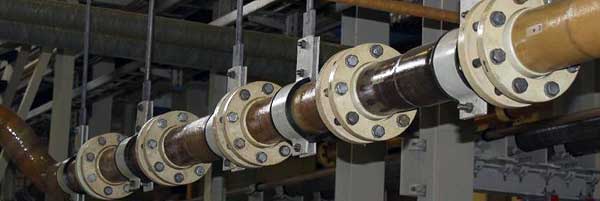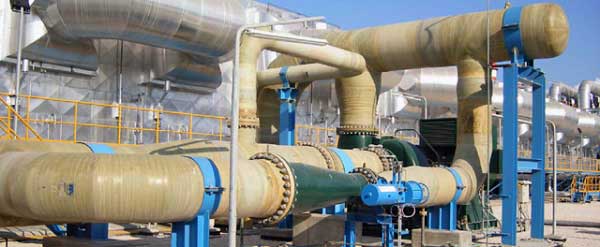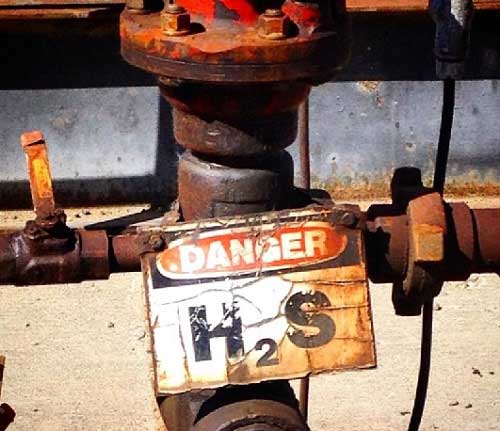Piping Materials for Chlor Alkali plants
Today, chlor-alkali plants operating around the world require that piping, tanks, headers, manifolds, storage towers and more are made of resilient materials that can withstand some of the harshest conditions in any industry.
The material used to construct about 80% of all pipes and equipment in a chlor-alkali plant is GRP (glass reinforced plastic) and GRE (glass reinforced epoxy).

Corrosion Resistance
The most important requirement for any chlor-alkali processing system is corrosion resistance. Often, the substances passed through pipes and tanks in a chlor-alkali plant are corrosive to some extent, and few materials have good resistance to these chemicals over a long period of time.
Examples of chemicals in chlor-alkali applications are..
- Sulphuric acid
- Wet chlorine gas
- Hydrochloric acid
- Sodium hypochlorite
- Demineralised/deionised water
- Cell liquid (brine, caustic soda)
- Sodium hydroxide (caustic soda)
- Concentrated sodium chloride (brine)
Any material chosen for pipes, chemical resistance layers in tanks or other structures within a treatment system must resist corrosion from a variety of strong and weak acids, strong and weak bases, salts, aliphatic compounds, oxidants and more.
Materials used in wastewater treatment applications are often also useful in chlor-alkali applications, since wastewater treatment materials must also remain in contact with many of these substances for long periods of time.
While some degree of corrosion is inevitable over the lifetime of a pipe or tank, ideally you want even corrosion across the surfaces. Localised corrosion, where penetration into the tank walls is more prevalent in specific areas, can lead to concentrated erosion and shorter life of system components.
Over time, problems with localised corrosion have become associated with carbon steel components, while stress corrosion cracking - another risk for pipes and other structures in corrosive environments - is often observed when stainless steel is chosen. It can be difficult to detect this kind of subtle corrosion, but by knowing the inherent strengths and weaknesses of the materials you choose, you have a better chance of avoiding certain problems altogether.
Resistance to high temperatures
Another important requirement for any material used in chlor-alkali systems is reliable long-term operation when exposed to high temperatures. It is common for chlor-alkali systems to transport and store liquids and gases that are constantly around 104°C (220°F). So the materials of the system components must not only withstand corrosion, but also continuous high temperatures.
Non-leaching properties
Due to the nature of a chlor-alkali system and the fact that the success of an oxidation/reduction process in an electrolysis cell depends on the presence of certain inputs, it is very important to ensure the purity and concentration of the various compounds.
For this reason, leaching of elements - such as calcium, magnesium, silicon, nickel, lead or tin - from pipes or other system components as a result of chemical reactions can cause significant problems in both processing and system life.
In the most common type of electrolysis chamber, for example, a membrane cell, a charge-sensitive membrane that only allows ions with a certain charge to pass through is crucial for the electrolysis process, but it can be compromised if only low concentrations of leached minerals enter the cell.

Image.. grpgulf.com
Material for a chlor-alkali plant
As described at the beginning of this article, the material used to construct about 80% of all piping and equipment in a chlor-alkali plant is GRP.
Glass Reinforced Plastic
GRP is a composite material consisting of a polymer matrix and glass fibres. The polymer matrix is usually a thermosetting epoxy, vinyl ester or polyester resin. The resin provides the product's environmental and chemical resistance, is the binder for the fibres in the structural laminate and determines the shape of a GRP part. The glass fibres add strength to the composite.
They can be randomly arranged or conveniently oriented. The most commonly used type of glass fibre for GRP is E-glass, which is alumino-borosilicate glass. E-CR (electrical/chemical resistance) glass is also commonly used in applications requiring particularly high protection against acid corrosion.
However, there are many other materials for a chlor-alkali plant on the market, below two examples..
Fibre-Reinforced Polymer
FRP is a composite material consisting of a polymer matrix reinforced with fibres. Although the fibres used are usually glass fibres, as in GRP, other fibres such as carbon, aramid or basalt are also used. FRP is a broader general term more commonly applied to engineering materials used in a wide range of industrial applications. However, the term FRP is often used interchangeably when referring to fibre-reinforced plastics.
Chlorinated Polyvinyl Chloride
CPVC is a tough, rigid vinyl thermoplastic with excellent corrosion resistance, even at high temperatures. Because CPVC can be machined, fabricated and welded, and because it is resistant to chemicals, flames and exceptional tensile strength, it is a product that can be used in various applications and industries that need to withstand high temperatures. Companies with Chlor-Alkali Systems can benefit from using CPVC.
You have been able to obtain in this article a brief overview of materials, which can be applied in a Chlor Alkali plant. In practice, however, you will have to follow the standards of a particular customer.
Related Post(s)

Any process fluid containing hydrogen sulfide is defined as Sour Service. According to NACE MR0175 / ISO 15156, this is a process atmosphere containing H2S, which can lead to cracks in the material...